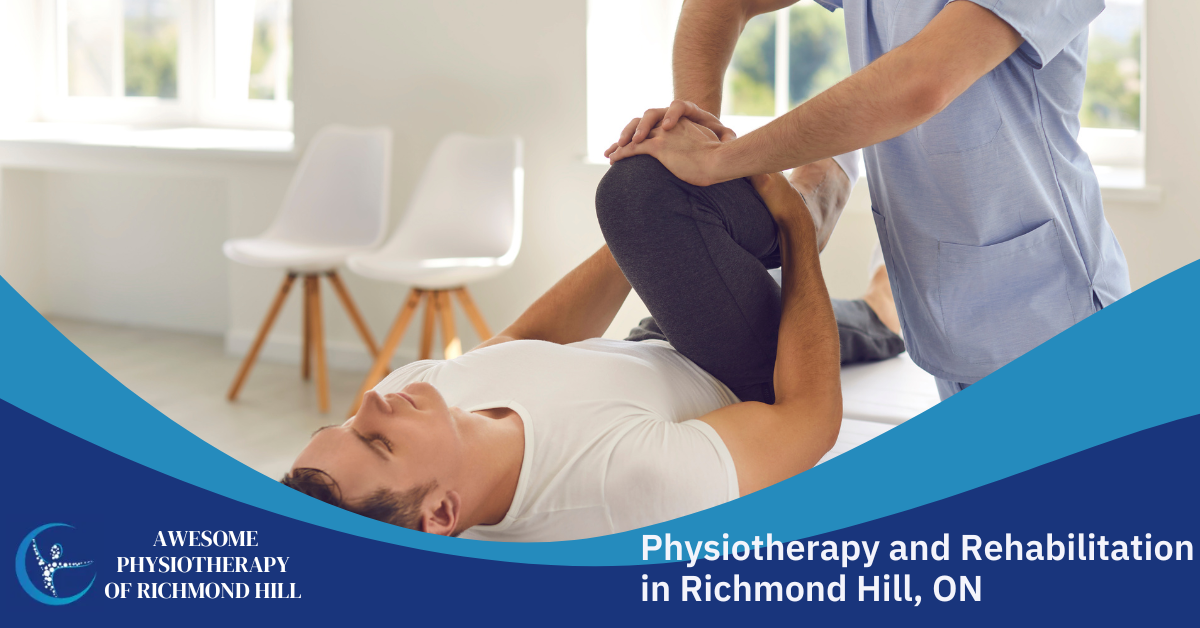Common Injuries and Conditions That a Physiotherapist Can Help Treat
Worldwide, injury is responsible for more than 5 million deaths per year. Without proper treatment, your injuries could lead to chronic pain and impact your overall quality of life.
By visiting a physiotherapist, you can receive the treatment you need from a licensed expert. A physiotherapist can design a custom plan to help treat a number of common injuries and conditions. Not sure if you could benefit from physiotherapy?
Keep reading to discover some of the common conditions and injuries physiotherapy can help treat!
Achilles Tendonitis
Achilles tendonitis is a common injury that can affect the Achilles tendon. This injury affects the back of the heal and can cause:
- Inflammation
- Limited mobility
- Pain
- Occasional rupture
Tendons are bands of tissues that connect bone and muscle. In this case, your Achilles tendon connects the calf muscle to the heel bone. Achilles tendinitis can occur due to:
- Increased exercise or activity
- Repetitive exercises
- Not warming up before exercise
- Wearing inappropriate shoes for exercise
- Bone growth to the heel bone
You’ll likely experience pain, swelling, or trouble standing. A physician or physiotherapist can diagnose Achille tendonitis by ordering an X-ray.
Treatment involves:
- Rest
- Avoiding aggravated activities
- Icing your heel to reduce inflammation
- Pain medication
- Wearing an ankle wrap to reduce tendon movement
- Physiotherapy
Your physiotherapist can develop a treatment plan to help you strengthen your calf muscles. Then, you can increase flexibility and mobility to avoid further injury.
Fractures and Dislocations
Physiotherapy is also an effective treatment for common injuries like fractures and dislocations.
Fractures are the result of applying excessive force on a bone. The force can cause a bone to break. Dislocations, on the other hand, occur when one bone is dislodged from another.
When administered immediately following the injury, physiotherapy can reduce your pain and symptoms. Symptoms can include:
- Pain when you move
- Soft tissue visible deformity
- Muscle spasms
- Swelling or bruising
- Reduced movement or range of motion
Physiotherapy can help relieve your pain and reduce your muscle weakness. It can also improve your range of motion and mobility. With regular physiotherapy exercise and treatment, you can strengthen your muscles and tissues to improve your recovery.
Hip Fractures
Hip fractures are a common injury with older patients. They often occur due to a fall, though falls are sometimes caused by bone weakness. For younger patients, hip fractures occur due to car accidents or sports injuries.
If a broken hip isn’t repaired as soon as possible, it can lead to complications or death.
Symptoms include:
- Extreme pain in the hip area
- Pain when you walk or an inability to walk at all.
- One leg appears shorter than the other
- Bruises along the hip
- Pain in the knee, buttock, or groin region
- Increased pain when you press on the side of your thigh
First, your physiotherapist will try to treat your pain. Left untreated, pain can cause delirium in older patients.
Some hip fractures require surgery. After your surgery, physiotherapy treatment can help you walk sooner. Treatment can also help you avoid ulcers and lung complications following the surgery.
With regular treatment, you can prevent muscle atrophy or a second injury. Receiving treatment as soon as possible can improve your range of motion and quality of life.
Ligament Injuries
For example, an ACL tear or sprain involves injuring the anterior cruciate ligament (ACL). Your ACL is a major ligament in the knee. Most people experience common injuries like an ACL injury playing sports.
You can also experience an ACL injury:
- By stopping suddenly
- Quickly changing direction
- Jumping and landing
People who play soccer, basketball, football, or who ski are prone to developing this injury.
When the injury occurs, you might hear a slight “pop” in your knee. You can also experience swelling and pain.
Physiotherapy treatment can help you regain strength and stability in your knee. A physiotherapist can also help you improve your mobility and ease your pain.
Your physiotherapist will create a custom plan that involves:
- Exercises to strengthen your leg muscles
- Core-strengthening muscles
- Training and exercise for proper technique and knee position when jumping
- Training to improve your technique when pivoting or cutting
These exercises will involve strengthening your leg, hip, and core muscles.
Lower Back Pain
Low back pain is the leading cause of disability worldwide. In fact, about 540 million people experience low back pain at a time. These common injuries are caused by poor posture, poor lifting techniques, trauma, or degeneration.
Ideal physiotherapy treatment includes:
- Manual therapy techniques (soft tissue releases, manipulation and mobilization of the joints)
- Extensive and specific strengthening and stretching exercises
- Correction of postural abnormalities
- Core muscle strengthening
- Improving your lifting technique
- Dry needling
- Taping or bracing
- Electrical nerve stimulation
These treatments can help improve your muscle strength and reduce your lower back pain.
Meniscal Tears
Physiotherapy for a meniscus tear of the knee is as effective as arthroscopic surgery. As the less invasive option, physiotherapy will allow you to resume normal activities sooner.
Menisci are crescent-shaped cartilaginous structures in your knee. They absorb shock and improve your stability. When you tear your meniscus, it can cause:
- Swelling
- Pain
- Locking
- Stiffness
Physiotherapy will help restore your full range of motion. It can also help reduce your pain and swelling, which will help improve your balance.
With regular physiotherapy treatment, you can strengthen your muscles that improve your hip, knee, and ankle for better function.
Plantar Fasciitis
Chronic stress on your feet and connective tissues can cause plantar fasciitis. Many athletes with flat feet develop this condition due to a lack of arch support.
Your physiotherapist can help provide relief from your pain to restore function to your foot and ankle.
Ease the Pain Away: Common Injuries a Physiotherapist Can Help Treat
Don’t live in pain! If you have one of these common injuries, your physiotherapist can help. Receiving regular physiotherapy treatment can relieve your pain, improving your overall quality of life.
Need to find physiotherapy in Richmond Hill? We’re here to help. Contact us today to start receiving treatment.



How Physiotherapy Can Help You Recover Faster: A Guide to Physiotherapy Centers In Richmond Hill, ON







